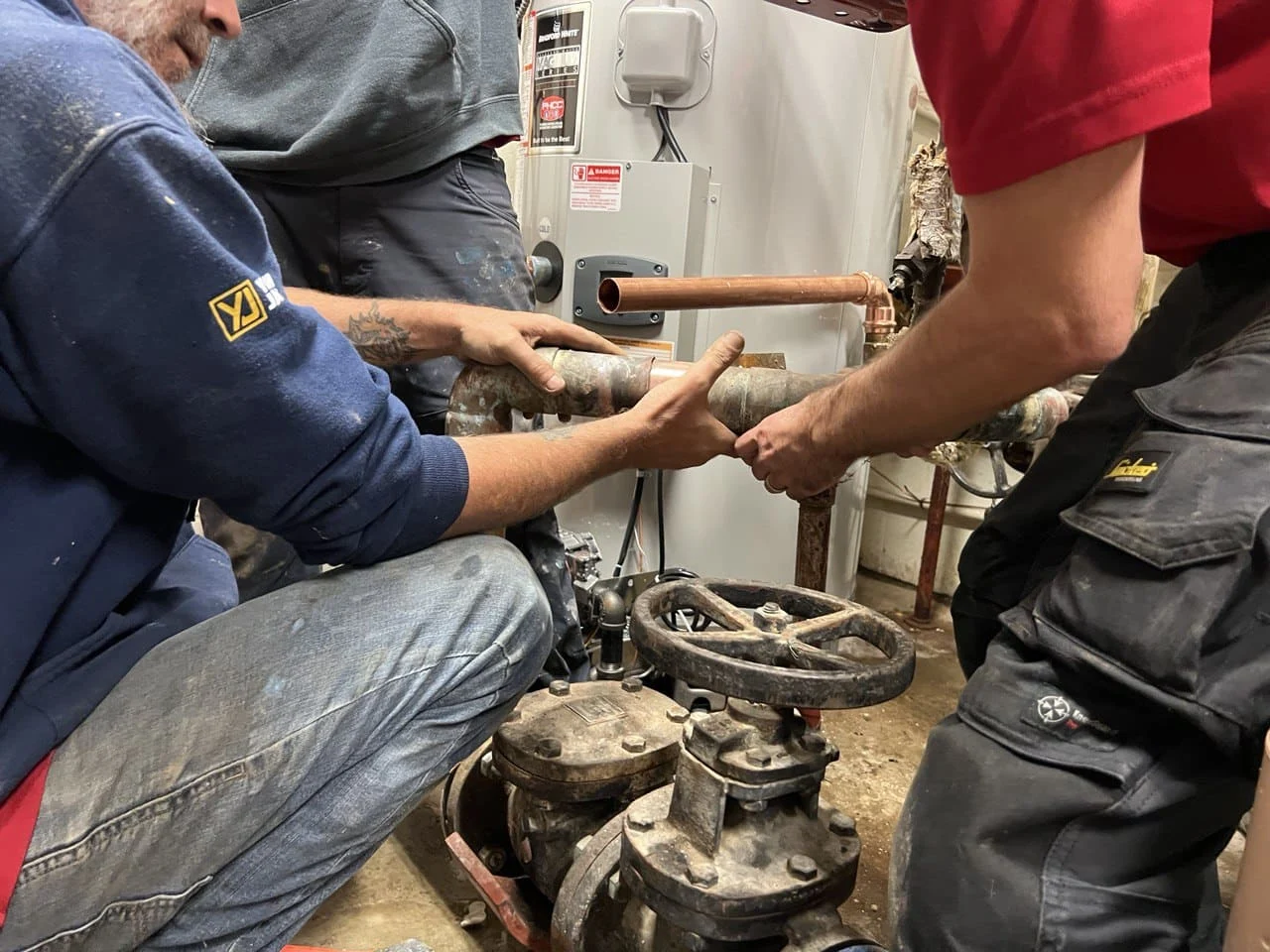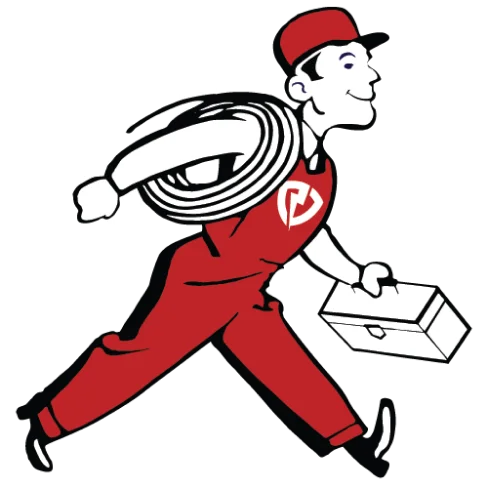As winter gives way to spring, your HVAC system faces unique challenges transitioning from heating to cooling mode. After months of dormancy, cooling systems often develop issues that can impact performance, efficiency, and your comfort at home. Understanding these common spring HVAC issues and taking preventive measures can save you from uncomfortable indoor conditions, unexpected repair bills, and premature system failures.
Let’s explore what you need to know to keep your HVAC system running smoothly this spring.
Why Spring Brings Unique HVAC Challenges
Spring marks the critical transition when your HVAC system switches functions after months of heating operation. This seasonal shift often reveals problems that developed during winter but weren’t noticeable until the cooling system activates. From pollen-clogged filters to refrigerant leaks that develop during freezing temperatures, spring exposes weaknesses in your system that require attention.
Most Common Spring HVAC Issues You’ll Face
1. Dirty and Clogged Air Filters
Perhaps the most widespread spring HVAC issue is dirty or clogged air filters. Throughout winter, filters accumulate substantial amounts of dust and debris. When you switch to cooling mode, these clogged filters restrict airflow, forcing your system to work harder while delivering less comfort.
The consequences extend beyond just poor performance. Restricted airflow can cause your evaporator coil to freeze, strain your system components, and significantly increase your energy bills. Plus, dirty filters can’t effectively capture the spring pollen and allergens circulating through your home, precisely when outdoor allergen levels peak.
The fix is simple: replace your air filters before activating your cooling system. Standard filters typically need replacement every 1-3 months, but homes with pets or allergy sufferers should change them more frequently. This small maintenance task delivers big benefits for system performance and indoor air quality.
2. Outdoor Condenser Unit Problems
Your outdoor condenser unit faces unique springtime challenges after sitting dormant all winter. Leaves, twigs, grass clippings, and spring vegetation often obstruct airflow through the condenser coils, preventing efficient heat release and forcing your system into longer, more energy-consuming cycles.
Spring’s plant growth creates additional problems as shrubs, vines, and tall grass can restrict proper airflow around the unit. Many homeowners inadvertently create these conditions during spring landscaping without realizing the impact on cooling performance.
Before turning on your AC, inspect your outdoor unit and clear away debris. Maintain at least two feet of clear space around all sides of the unit and gently clean the external coil surfaces following manufacturer guidelines. This simple maintenance prevents numerous performance issues before they develop.
3. Refrigerant Leaks
The winter-to-spring transition often reveals refrigerant leaks that developed during cold weather. As components contract and expand with temperature changes, small cracks or connection problems can emerge, allowing refrigerant to escape.
Unlike gasoline in a car, refrigerant doesn’t get “used up” during normal operation—any reduction indicates a leak requiring professional attention. Signs include diminished cooling capacity, ice formation on refrigerant lines, and increased energy consumption as your system struggles to maintain desired temperatures.
Low refrigerant levels can lead to compressor damage, one of the most expensive HVAC repairs. Schedule a professional inspection before cooling season begins to catch and address refrigerant issues early.
4. Drainage Problems
As your air conditioner removes humidity from indoor air, it produces condensate that must drain properly. After winter dormancy, condensate drain lines often become clogged with algae, mold, or even insect nests, causing water to back up into your system or home.
The risk increases significantly in spring when higher pollen counts and organic material create ideal conditions for biological growth in these dark, moist drain lines. These clogs can trigger automatic system shutdowns in units with overflow protection switches and create moisture damage or mold growth in your home.
Prevent drainage headaches by flushing condensate lines with appropriate cleaning solutions before heavy cooling season use begins. Consider installing drain line access points to simplify future maintenance.
5. Thermostat Issues
Thermostat problems frequently emerge during spring as systems switch operating modes. Winter temperature fluctuations can affect calibration, battery performance, and physical connections within these sensitive control devices. When your thermostat provides incorrect temperature readings or fails to communicate properly with your HVAC equipment, your cooling system can’t perform efficiently.
Test your thermostat before cooling season demand increases by replacing batteries, verifying calibration, and confirming proper communication with your HVAC system. For programmable models, update schedules to reflect spring occupancy patterns. Consider upgrading to a smart thermostat that offers improved control options and efficiency features.
Essential Spring HVAC Maintenance Tips
DIY Maintenance You Can Handle
Taking a proactive approach with simple maintenance tasks can prevent many common spring HVAC issues:
Create a seasonal checklist for consistent attention to potential problem areas. Establish a regular filter replacement schedule based on your home’s specific needs. Maintain proper clearance around your outdoor condenser unit and keep it free of debris. Listen for unusual noises or changes in performance that might signal developing problems. Check visible ductwork for signs of damage, disconnection, or pest activity.
These HVAC tune-up tasks require minimal time investment but yield substantial benefits in system performance and longevity.
When to Call the Professionals
While DIY maintenance helps, professional HVAC service provides a comprehensive evaluation and addresses technical aspects requiring specialized tools and expertise:
Schedule seasonal HVAC maintenance before the cooling season demands increase. Have technicians evaluate refrigerant charge using specialized equipment. Request electrical testing of capacitors, motor windings, and control circuits. Have professionals clean and treat condensate systems to prevent clogs. Consider establishing a scheduled maintenance agreement for priority service and potential discounts.
Professional technicians can spot subtle changes from previous conditions that often provide early warning of developing issues, potentially saving you from expensive emergency repairs during the hottest days of summer.
Invest Now to Avoid Summer Discomfort
Taking time to address common spring HVAC issues before they escalate will pay dividends in system performance, efficiency, and reliability. The small investment in preventive maintenance delivers returns through extended equipment life, avoided emergency service costs, improved energy efficiency, and enhanced indoor comfort during spring’s challenging transition. For your HVAC tune-up needs, you can always contact our services. Our technicians are knowledgeable, thorough, and will always keep you in the loop of every step in the maintenance process. We strictly adhere to schedule, meaning no time is wasted, in turn guaranteeing peace of mind.


